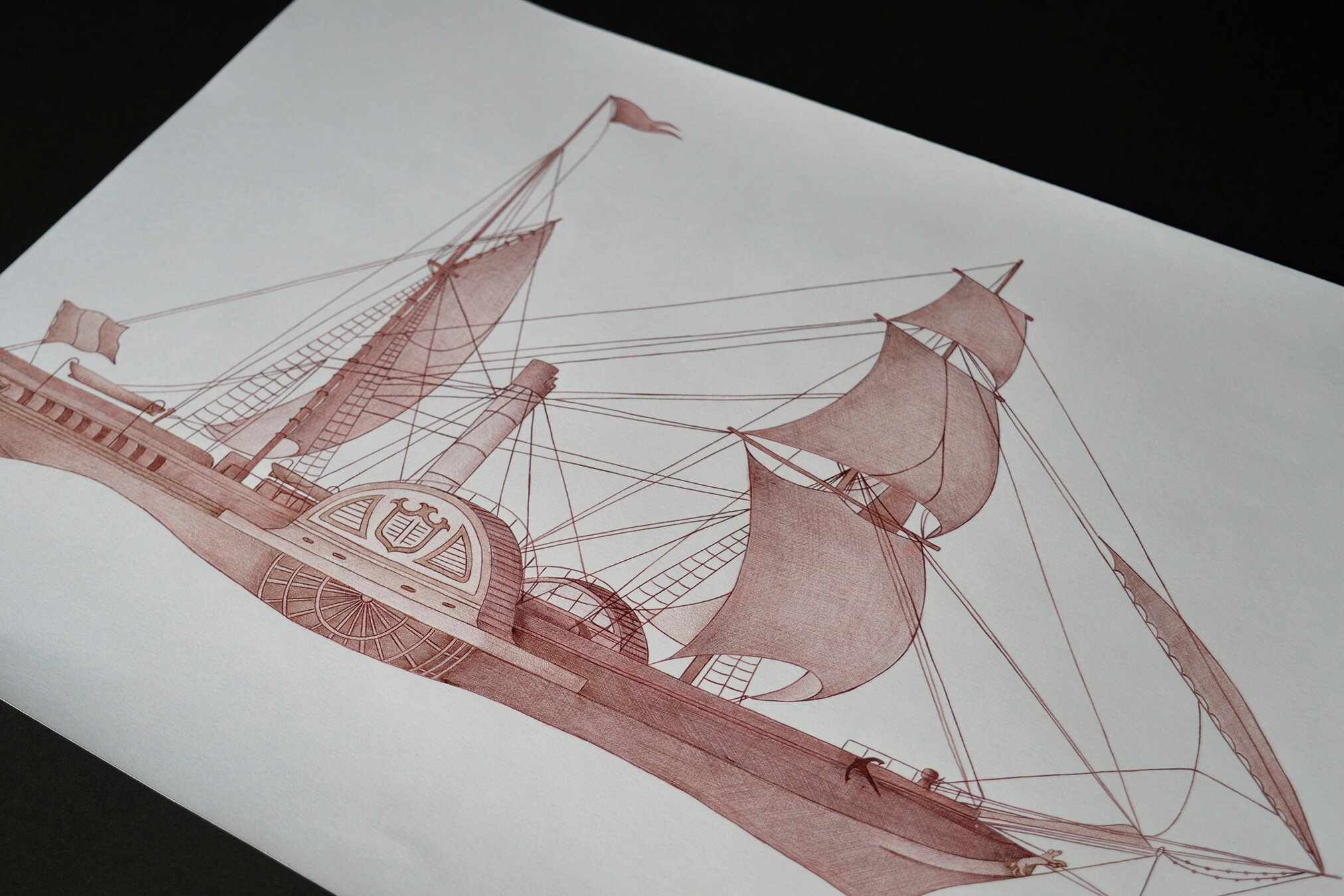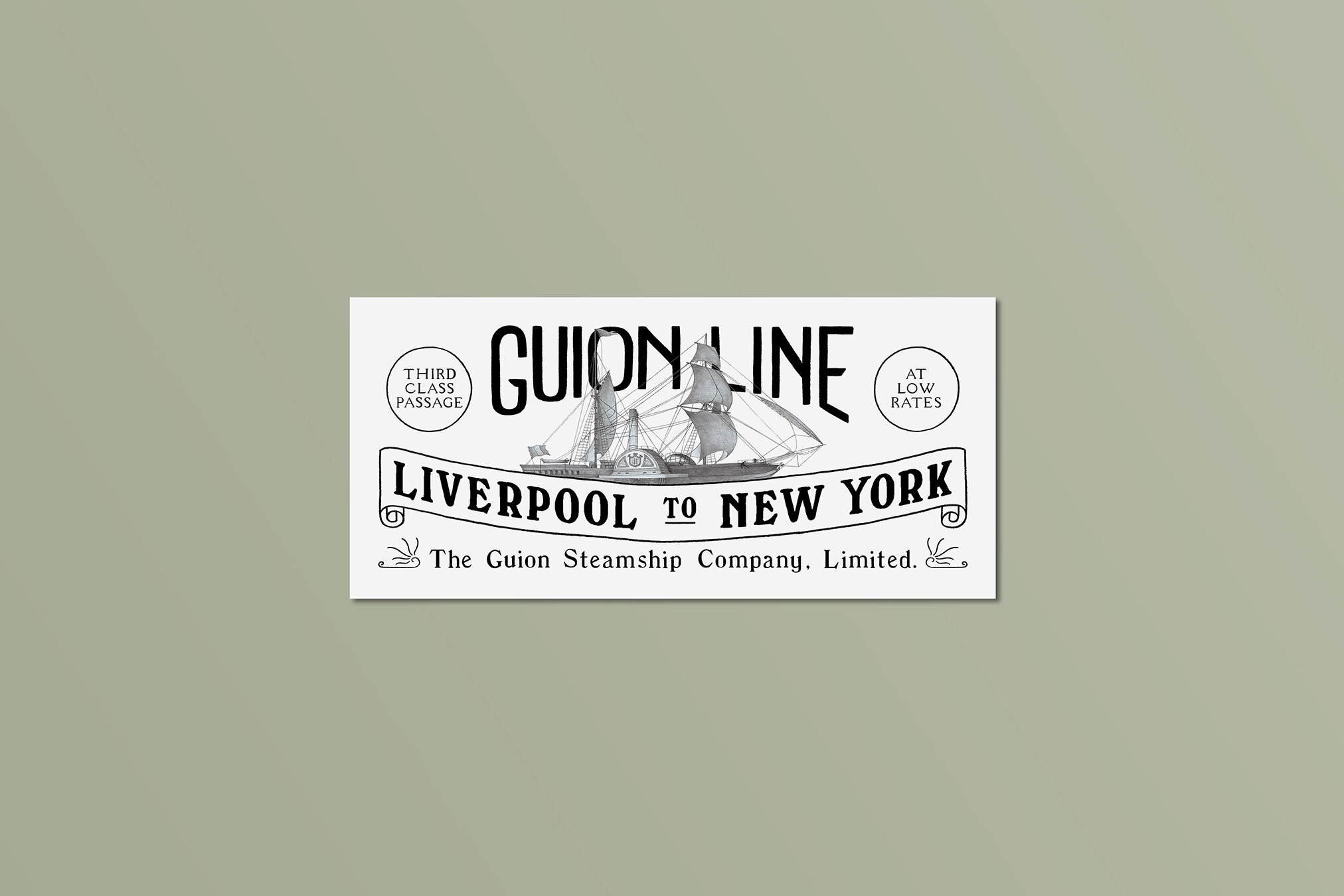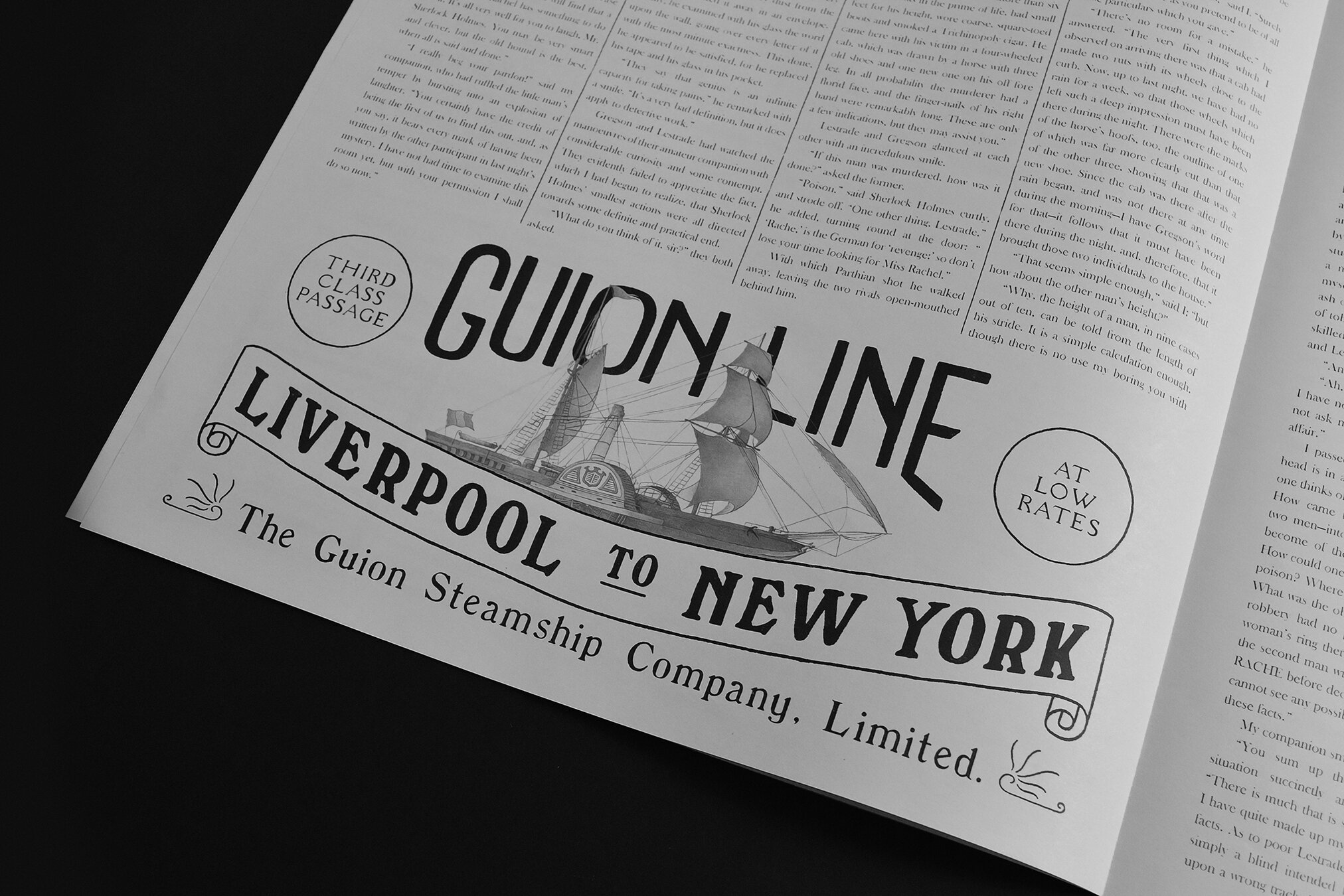Ballpoint Illustration / SS Sirius
I didn’t know much about the SS Sirius until recently, despite seeing its legacy all over Cork. If you visit Cobh today, you might pass the Sirius Arts Centre; if you wander around Passage West you might see a paddle shaft from the ship on display; it's even the reason Ballycotton has a lighthouse now!
I'll share its story below if you're curious, but the reason I researched and drew it in the first place was as part of an advert in my Scarlet project. I've used artistic license obviously, but it's a self-indulgent project anyway, so I drew my favourite instead of a more accurate ship 🤷 It felt like a good time to share the story too, as Sirius made its most famous journey in April. I’ve also been playing AC Black Flag lately, humming sea shanties while sailing around in my virtual ship. So, here's the (shortened!) story of a historic Cork ship!
Built in 1837, the Sirius was originally intended for a Cork-London Route, but within a year it was chartered to sail to New York instead, competing to be the first steamship to cross the Atlantic from Europe to North America under continual steam power. It left Cork in April 1838, carrying 38 crew, 40 passengers, and cargo including Beamish and Crawford Stout. Its closest rival in the race, Great Western, left England four days later, and came close to overtaking her, but Sirius emerged triumphant, arriving in New York first, with just hours to spare, after a voyage of 18 days, 4 hours, and 22 minutes.
The ship was really too small for such an ambitious journey, and was celebrated enthusiastically as an underdog. Its story has inspired novels, films and more since.
Sirius’ final voyage was tragic; after struggling with dense fog, it ran into rocks off Ballycotton. Its single lifeboat was overloaded and overwhelmed by the rough conditions, and in all, 20 lives were lost. The wreck highlighted the need for a lighthouse between the Old Head of Kinsale and Hook Head; so, Ballycotton Lighthouse was built, lighting up for the first time in 1851.



